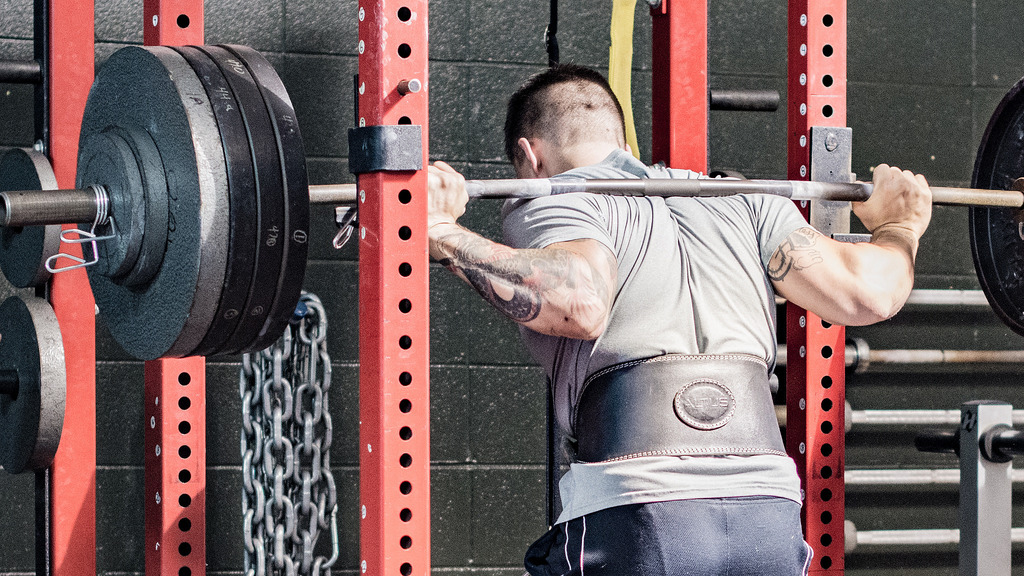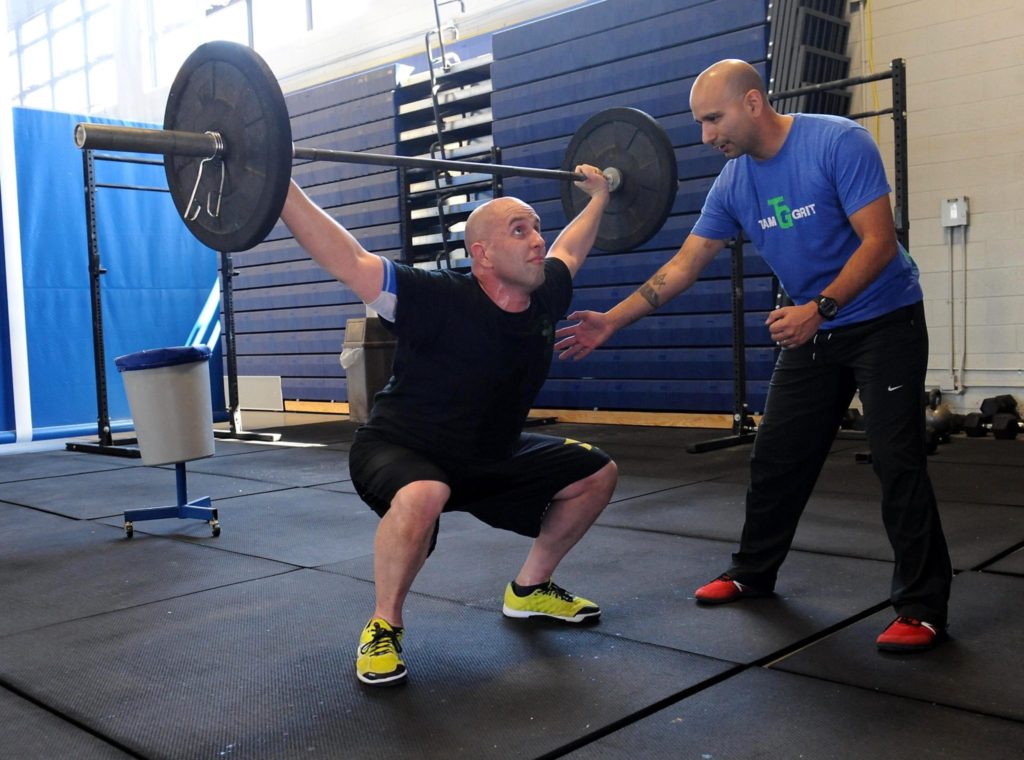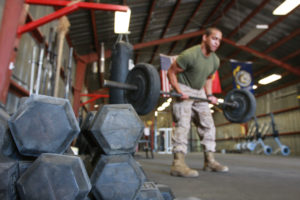It appears there are two camps. You have the West-side Barbell camp, that believe that you should never train the competition movement and only use strength training variations. You never want to let the Law of Accommodation take place out of fear of training losing its effect.
Then you have purists that believe the sporting movement is all that matters. This normally comes in the forms of technical coaches (in athletics, sprint coaches are a prime example). Anything other than sprinting isn’t worth your time.
WHO IS RIGHT?
As the knowledge surrounding the development of strength has grown, we have come to understand that simply performing the one exercise repeatedly in training, potentially loses its effect over time. It’s a simple biological principle known as the Law of Accommodation, in which repeated exposure to a stimulus decreases the homeostatic disruption that occurs (13). In more simple terms, your body becomes used to it. It’s that simple. Or is it?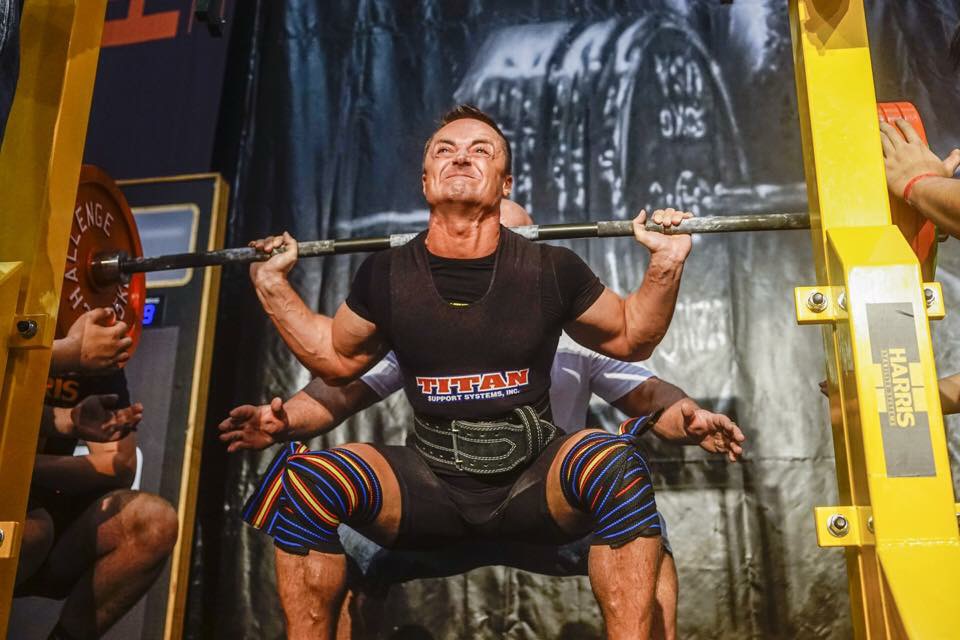
SUPPORT OF SPECIFICITY
STOP! Now before you take the previous comment as gospel, keep in mind that the early experiments surrounding Law of Accommodation involved testing isolated physiological responses (e.g. rise in cortisol as an indicator of stress). Strength is slightly more complicated than that.
STRENGTH IS A SKILL
To become truly strong within any exercise, movement, lift or whatever you must practice the motor skill. The whole phrase of practice makes perfect (kind of) applies here. But on a neurological level, for your body to improve neural efficiency, you must practice the motor skill, firing the same muscles in the  same order, repeatedly. In addition, the literature has directly researched the effect of coordination and learning within strength development (9, 10, 11).
same order, repeatedly. In addition, the literature has directly researched the effect of coordination and learning within strength development (9, 10, 11).
I won’t dive into the neural mechanisms of strength any further, as there is will be an entire article released in the future on this exact topic!
WHAT DOES THE RESEARCH SAY?
The logic of it makes sense, right? The whole idiom of “If you want to bench more, you have to bench more” rings true. Surely you don’t need the use of strength training variations?
When it comes to comparing different forms of training (e.g. static and concentric based) there are several studies available (4, 5, 6, 8, 11). They found that the greatest improvements were made when the training matched the testing (e.g. concentric got better at concentric). A brief review summarised that due to the ample evidence, there is sufficient support favouring the use of exercise type specificity (7).
And that is what I like to call the “no shit Sherlock” effect. It doesn’t take an undergraduate degree or years of research to suggest that you get better at something the more you practice.
IS IT THAT SIMPLE?
Unfortunately, no. A lot of this early research involved standardized, single joint tests examining different methods of contraction rather than the strength in a certain movement. Therefore, you could question the efficacy of applying these findings directly to the more complex, multi-joint movements such as the squat/deadlift.
There was a research article published recently that stated that the best way to get a stronger 1RM, is to perform your 1RM day after day (3). I’m not joking. For 21 days, subjects performed a 1RM test daily on 1 arm, and then a 1RM test plus 3 working sets on the other arm. They found similar improvements in strength in both arms. I saw one of the researchers on social network stating that muscle growth has no influence on strength, nor does exercise volume. Instead, they theorised that it is purely the specificity of the exercise (3).
NOT SO FAST…
This study had 5 participants, performing a 1RM elbow flexion test, or in other words, a bicep curl. Now when you consider the recovery patterns of different exercises and contraction types, it is well known that greater training intensities, involving larger muscle groups and more weight lifted takes much longer to recover from (1). Furthermore, the larger the muscle involved in the exercise, the more damage it is capable of inflicting upon itself.
It is also well known that physiological stress/fatigue is task specific, meaning different exercises require different recovery times. I don’t care who you are, you simply cannot apply the findings of this particular study to all aspects of strength development. If you do think that, go and max out your deadlift 21 days in a row and try telling me you don’t feel like you’ve been hit by a car.
BUT WHAT ABOUT THE BULGARIAN SQUAT PROGRAM?
Ah jeez. Here is where it gets a little more complicated, but bear with me if you want to truly understand how to maximise your strength. The Bulgarian program is heralded and world famous for the potentially phenomenal improvements in squat strength that can occur. Along with Smolov, these programs are incomparable to others in their effectiveness. But sticking with the Bulgarian program, this training protocol involves you performing a 1RM every single day. Some people can perform this for weeks, months even YEARS on end. But I just said maxing isn’t effective, right?
MAKE YOUR MIND UP!
It can be. The key with the Bulgarian program that most people get confused about, is the definition of 1RM. Most people think it is an absolute maximal lift. The Bulgarians however, use a technical max; in which your technique is more or less perfect, there is no breakdown caused by the heavy load and there is absolutely no psyching up. So, technically it’s not really a 1RM test.
In addition, regarding the specificity section. This type of program is excellent at maximising your efficiency, however do you know how many lifters this program broke when it was first written? Literally hundreds of lifters experienced career ending injuries due to chronic overuse in the exact same movement repeatedly. From a physiological and psychological standpoint, overtraining syndrome can be caused by training monotony/boredom (2) and overuse injuries can be caused by repeated exposure to the same movement (12).
GOT ISSUES?
However, the one question I always pose to these individuals is, if you have a glaring weakness that is caused by muscular strength (or a lack thereof) then how will you improve that? If the competition movement doesn’t actively train certain musculature, but can help assist your strength then how will you improve it?
A prime example of this is your lats/upper back musculature in the bench press. I can assure you (no matter what anyone says) that biomechanically, the upper back is not actively contributing to the press itself. 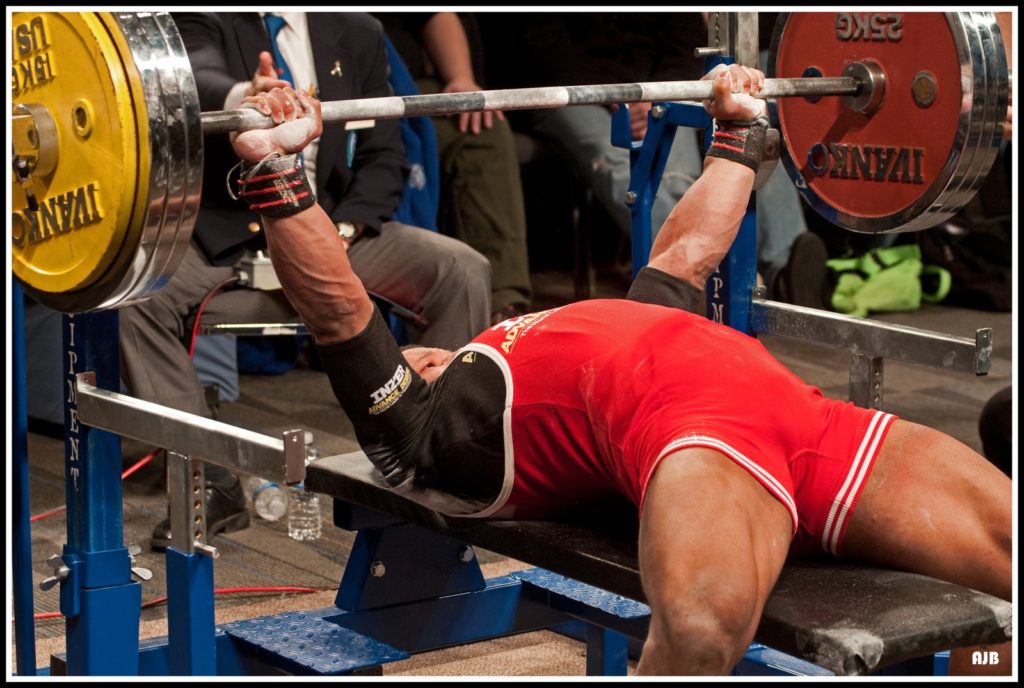 However, it is crucial for maximising shoulder stability and therefore, indirectly has the potential to give you a better “platform” to press off and therefore stronger bench press. Are you honestly telling me that the best way to train your upper back musculature is to bench press repeatedly? You would be foolish to think so.. However, if this is your weakness then performing strength training variations that targets this area may, in the long run contribute to improving your bench press strength.
However, it is crucial for maximising shoulder stability and therefore, indirectly has the potential to give you a better “platform” to press off and therefore stronger bench press. Are you honestly telling me that the best way to train your upper back musculature is to bench press repeatedly? You would be foolish to think so.. However, if this is your weakness then performing strength training variations that targets this area may, in the long run contribute to improving your bench press strength.
SO WHAT DO WE DO?
THIS is where strength training variations come into play. Truly effective variations involve similar motor patterns/characteristics to the exercise you’re trying to improve. They can also be ranked as primary or secondary strength training variations, depending on their “carryover” or “specificity” to the ‘competition movement’. Now this section is largely subjective, but the principles are not.
“The aim of performing strength training variations is to provide a different stimulus to the body to prevent the Law of Accommodation taking place, but to train a similar motor pattern to improve neural efficiency.”
REAL WORLD EXAMPLE
Look to the way most Olympic Weightlifters train. Although they do perform the competition exercises, most of their training consists of a handful of strength training variations, that are continuously rotated. In fact, Zatsiorsky found that up to 80% of their training consists of variations exercises and very little involved the competition exercise.
WHY IS THIS?
Well, referring to the previous point it’s down to training the motor pattern involved. When you breakdown the Olympic Weightlifting movements, you can identify as many as 5 phases ( 1st pull, transition, 2nd pull, catch, recovery) depending on how you have been coached/coach your athletes. Therefore, you can essentially isolate the different phases and dedicate a whole host of exercises purely to that phase. Examples for the 1st pull include:
- Snatch grip 1st Pull
- Heavy Clean Grip 1st pulls
- Halt Deadlifts etc.
OOO SHINY!
Don’t be that person. Don’t see a new exercise on Instagram and say, “Wow another exercise I can add to my ever-growing list of fancy strength training variations” that results in you never actually progressing in a specific exercise. The key here is progression. If you don’t have an exercise that is consistently performed within your training, it becomes a damn sight more complicated to track your progression.
Plus, as we mentioned earlier, the importance of neural efficiency cannot be overstated. One of the most important aims of strength training is to become efficient and allow your body to become incredibly strong within a given motor pattern.
VERDICT
Here’s the thing, if you perform the competition movement only, you would do a lot better than you would if you performed a myriad of strength training variations only. However, when programmed correctly, in my mind there is no doubt that combining competition movements with effective strength training variations is superior to competition movements alone.
The key (as is nearly always the case) is effective application. Keep your competition specific, sporting movement and train it regularly.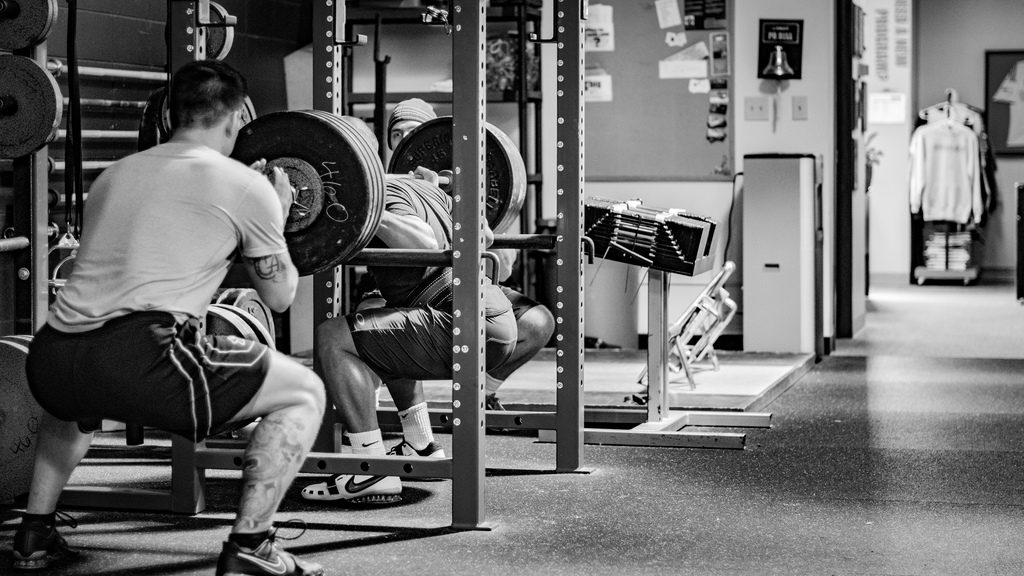
Include 1 to 2 strength training variations that train a similar motor pattern, but provide a varied stimulus to the body. Make sure that it does not take away from the competition lift!
Soon I will be releasing my top 3 strength training variations for the squat, bench and deadlift (supported by the research), so stay tuned!
REFERENCES
- Bloomer, R. J., & Ives, J. C. (2000). Varying Neural and Hypertrophic Influences in a Strength Program.Strength & Conditioning Journal, 22(2), 30
- Bushman, B. A. (2016). Finding the Balance Between Overload and Recovery.ACSM’s Health & Fitness Journal, 20(1), 5-8
- Dankel, S. J., Counts, B. R., Barnett, B. E., Buckner, S. L., Abe, T., & Loenneke, J. P. (2016). Muscle adaptations following 21 consecutive days of strength test familiarization compared with traditional training.Muscle & Nerve
- Darcus, H. D., & Salter, N. (1955). The effect of repeated muscular exertion on muscle strength.The Journal of physiology, 129(2), 325.
- Kanehisa, H., & Miyashita, M. (1983). Effect of isometric and isokinetic muscle training on static strength and dynamic power.European journal of applied physiology and occupational physiology, 50(3), 365-371
- Knapik, J. J., Mawdsley, R. H., & Ramos, M. U. (1983). Angular Specificity and Test Mode Specificity of Isometric and Isokinetic Strength Training*.Journal of Orthopaedic & Sports Physical Therapy, 5(2), 58-65
- Morrissey, M. C., Harman, E. A., & Johnson, M. J. (1995). Resistance training modes: specificity and effectiveness.Medicine and Science in Sports and Exercise, 27(5), 648-660
- Petersen, F. B. (1960). Muscle training by static, concentric and eccentric contractions.Acta physiologica scandinavica, 48(3‐4), 406-416.)
- Ramsay, J. A., Blimkie, C. J., Smith, K., Garner, S., MacDougall, J. D., & Sale, D. G. (1990). Strength training effects in prepubescent boys.Medicine and science in sports and exercise, 22(5), 605
- Rutherford, O. M. (1988). Muscular coordination and strength training.Sports Medicine, 5(3), 196-202
- Rutherford, O. M., & Jones, D. A. (1986). The role of learning and coordination in strength training.European journal of applied physiology and occupational physiology, 55(1), 100-105
- Schroeder, A. N., Comstock, R. D., Collins, C. L., Everhart, J., Flanigan, D., & Best, T. M. (2015). Epidemiology of overuse injuries among high-school athletes in the United States.The Journal of pediatrics, 166(3), 600-606
- Zatsiorsky, V. M., & Kraemer, W. J. (2006).Science and practice of strength training. Human Kinetics


